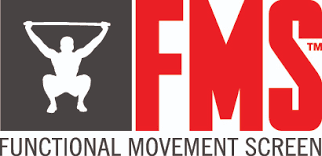How common are headaches? According to the World Health Organization, headaches are extremely common. In fact, headaches affected half of all adults aged 18-65 in the world in the last year, and up to 1 adult in 20 has a headache every — or nearly every — day!
Many people are familiar with the discomfort associated with a headache disorder. But what exactly is a headache?
Explaining a headache
A headache is a condition that typically causes pain in the head, neck, or face areas. The discomfort caused by a headache ranges from inconvenient and uncomfortable to debilitating. Headache pain varies from dull and achy to sharp or throbbing.
There are many types of common headaches. Most headaches are not caused by serious health conditions, although some are.
Headaches can be a cause for missing work or skipping social events. They can be a condition in of themselves, or they can be a symptom of another illness or health problem.
Different types of headaches
Did you know there are multiple types of headaches? In fact, the International Headache Society identifies more than 150 different types of headaches! Headaches can be broken into three main categories: primary, secondary, and other.
A primary headache is not a symptom of another illness or condition. A primary headache is just that — an ache in the head or neck regions. Primary headaches occur due to some dysfunction or overactivity of one or more of these structures:
- Neck and head muscles
- Joints of the cervical (neck) spine
- Areas of the brain
- Brain chemicals (neurotransmitters)
- Blood vessels
- Nerves of the head and neck
Tension-Type Headaches
Headaches arising from the muscle and joints (musculoskeletal system) of the head and neck are relatively easier to treat and respond well to conservative options. The most common form of primary headache is known as tension-type headache.
Tension-type headaches often feel like a tight band around the forehead and temples and may be accompanied by dull, achy, and tight sensations in the head and neck. Although tension-type headaches are not the only primary headache, they are the most common.
Migraine Headaches
Another type of primary headache is a migraine. Migraine headaches, although still classified as primary headaches, are more complicated to treat. Migraines are the second most common type of primary headache and can significantly impact the ability to perform usual routines, including work obligations and recreation, due to severe, recurring pain.
Migraines are a very painful primary headache and are often accompanied by nausea, vomiting, vision changes, sensitivity to sounds and light, and lightheadedness. Migraines can last anywhere between a few hours to several days. A migraine can also have a variety of triggers, severity, frequency, and even symptoms.
Thankfully, most primary headaches are managed easily by primary health care options such as a family physician and chiropractor!
Secondary headaches are headaches due to another condition or disorder. More involved medical management is required when headaches arise from secondary conditions. These include:
- Infections
- Stroke
- Trauma or physical injury
- Brain tumors
- Thyroid conditions
- Pregnancy
- Medication or substance abuse
- Psychiatric disorders
- And more
Other headaches or headaches caused by painful nerve disorders such as cranial neuropathies and palsies. You should also consult a doctor if your headaches occur regularly, disrupt your ability to work or perform your usual routine, fail to improve with medication, and/or occur with other serious symptoms such as a stiff neck, fever, or sensory changes.
Who gets Headaches?
Understanding what causes your headaches can help you avoid getting them in the future. Keeping a headache journal can help identify symptoms, timing, and circumstances that trigger the onset of a headache.
Some individuals may be more susceptible to developing headaches. Lack of sleep, hormonal changes, alcohol intake, caffeine withdrawal, high levels of stress, food sensitivities, changes in the season or environment, lack of exercise, and prolonged periods of poor posture all can be factors in developing headaches.
Jobs with potentially poor ergonomics such as construction and labor, driving, office work, sitting or standing for long periods of time, and work-from-home situations can also increase the frequency and timing of headaches.
Can a chiropractor help me?
A well-trained chiropractor can assess and treat mechanical, also known as musculoskeletal, conditions!
A chiropractor is a doctor trained to analyze the physical movements of the body. Chiropractors help mechanical causes of headaches and head pain through gentle, conservative interventions that don’t include injections or surgery.
At our Burlington chiropractic office, we take the time to get to know you and your symptoms. We perform a thorough exam, find the cause of the headaches, and develop an appropriate and individually tailored treatment plan.
Not only does headache treatment reduce the pain, but our office is well-positioned to identify areas in your life that could be contributing to the development of headaches: ergonomic and environmental factors, poor posture, muscle strain and tension, migraines, and more.
Who should I see for a headache, and when?
If your headaches are increasing in severity, frequency, or interfering with your ability to perform usual routines and activities, it’s time to see a doctor.
While many headaches are not caused by a serious underlying medical condition, headache disorders can still be painful. Some headaches are downright disabling. You should speak with your primary care physician if you consistently have any type of headache. That way, they can help create a treatment plan or refer you to a specialist for further evaluation and management.
Primary headaches are well-managed by a conservative musculoskeletal doctor, like a chiropractor. A chiropractor has the right training to evaluate and assess headaches to determine what the cause of a primary headache may be, especially if the cause relates to poor ergonomics, muscle strain or tightness, joint dysfunction, or nerve impingement.
Additionally, a chiropractor has multiple tools to treat headaches! Methods of treatment for headaches depend on the cause of the headache. Some examples of treatment include gentle approaches such as myofascial release and soft tissue massage, spinal manipulation therapy, focused physical therapy and rehabilitation, dry needling, or passive therapies including electric stimulation.
Headaches that are secondary or caused by other medical conditions need to be carefully monitored and managed by a well-trained doctor.
You should seek immediate medical attention if your experience the worst headache you’ve ever had, lose vision, have uncontrollable vomiting, or if your headache last more than 72 hours.
Give our Burlington office a call if you are experiencing headaches!
What our patients are saying:
The best chiropractor I have been to hands down. Dr. Andy has went above and beyond the normal care I’ve received in the past. He has even come in on days the clinic is technically “closed” to assist me! I would highly recommend anyone who is looking for pain relief to give Cardinal Chiropractic a call! ~ Zach J. from Burlington, NC
How we treat headaches
At Cardinal Chiropractic and Sports Recovery, we take the time to get to know you. Pain is not easy to endure, and we strive to provide the most compassionate and effective forms of treatment.
After a thorough examination and diagnosis, if chiropractic care is not the right intervention for your pain, then we make the referral to another specialist, such as an orthopedist or sports medicine doctor.
Statisticians say that at any time, 1 in 20 people around the globe will suffer from headaches. Many patients who complain of pain seek chiropractic care.
If you or someone you know is suffering from lower back pain, give our Burlington office a call to schedule an appointment rather than wait to see if the pain improves or goes away. Our chiropractors are trained to manage numerous musculoskeletal conditions with success, helping people live a healthier and pain-free life!
If you want a same-day appointment for your pain, call our office at 336-270-3050 or schedule online.



